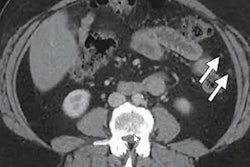Dear Women's Imaging Insider,
It's conference season, and women's imaging has been a major focus of presenters at many events this month. As we finish up coverage of the International Society for Magnetic Resonance in Medicine (ISMRM) meeting, we're also gearing up for the Society of Breast Imaging/American College of Radiology Breast Imaging Symposium next week.
At ISMRM 2022, newer MRI techniques have been explored for more accurate classification of breast lesions. A Chinese team that presented at the meeting showed that combining diffusion-weighted imaging (DWI)-MRI models can accurately differentiate between malignant and benign breast lesions. Read what they presented to audience members in this edition's Insider Exclusive.
Speaking of DWI-MRI, presenters at ISMRM 2022 talked about how this method could be a contrast-free alternative to dynamic contrast-enhanced MRI. Two abstract presentations at the meeting showed DWI's potential and benefits.
Also from ISMRM 2022, MRI has advantages over CT when it comes to detecting and characterizing ovarian masses. Find out what's making Dr. Anju Sahdev from Queen Mary University of London say MRI is "by far the best modality we have" when it comes to ovarian cancer screening.
In other news, MRI findings on supplementary screening can help influence whether women with ductal carcinoma in situ choose local excision or mastectomy for treatment.
Plus, check out the following recent women's imaging stories:
- Practices should consider several factors before purchasing artificial intelligence tools for their breast imaging departments, according to a talk given at the American Roentgen Ray Society (ARRS) meeting in New Orleans.
- Also at ARRS 2022, Dr. Jay Parikh from the University of Texas MD Anderson Cancer Center gave a keynote speech about how radiologists can fight disparities in breast imaging.
- Chest wall ultrasound is a good alternative for follow-up imaging of breast cancer patients after mastectomy, according to two presenters from the MD Anderson Cancer Center in Texas at ARRS 2022.
- A team from the University of Miami found that lower breast cancer incidence seen in Asian American women may be caused by a lower screening mammography rate in this group.
- Canadian researchers found that women with multiple sclerosis (MS) are less likely to have breast cancers detected through screening mammography than women without MS.
Find more articles like these by regularly visiting your Women's Imaging community!




















